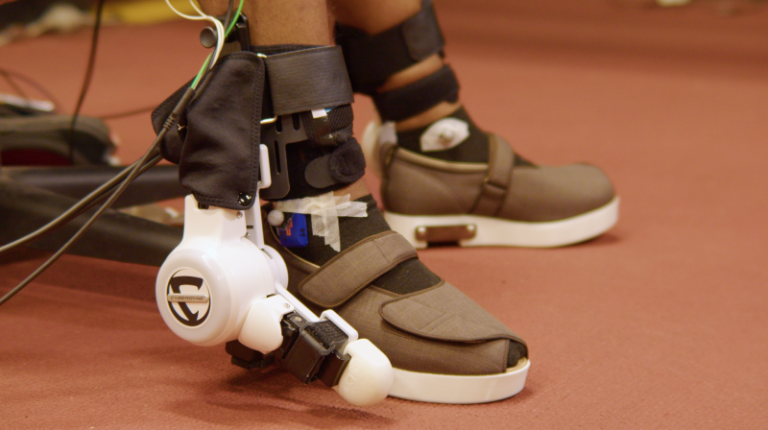Reviewed by Danielle Ellis, B.Sc.Nov 9 2022
Exoskeletons -- motorized mechanical devices attached to an individual’s body to assist movement -- have been a popular feature in science fiction movies from Robocop to Iron Man as a means to give someone superhuman skills.
 Ankle exoskeleton. Image Credit: Victoria University
Ankle exoskeleton. Image Credit: Victoria University
But researchers at Victoria University’s (VU) Institute for Health and Sport are using the concept in real life to help the elderly or people with physical injuries or neurological conditions such as spinal cord damage, stroke, or osteoarthritis improve their mobility.
As one of the few organizations worldwide to combine gait biomechanics, robotics, computational intelligence and wearable sensors, VU has been working for nearly a decade on research that will allow wearable exoskeletons to replace centuries-old mobility aids such as wheelchairs, walking frames or canes.
Researchers Professor Rezaul Begg and Dr Hanatsu Nagano are currently conducting research with world-leading Japanese company, CYBERDYNE (which anecdotally is the name of a fictional robotics company in Terminator films) which developed the world’s first wearble cyborg, the Hybrid Assistive Limb (HAL) exoskeleton.
How a Hybrid Assistive Limb (HAL) Exoskeleton works
HAL identifies and anticipates an impaired person’s residual muscle activation commands as ‘micro-electricity’ through a sensor attached to the wearer, which then operates an external robotic device attached to the non-functioning limb. If attached on an ankle, for example, it can use the micro-electricity signal to precisely control the exoskeleton’s required timing and ankle movement to walk.
In short, it understands the wearer’s intention and assists him or her to reproduce the intended move.”
Professor Rezaul Begg
With repeated training, the device could affect a wheelchair-bound patient’s brain neuroplasticity, helping to reconnect signals between their damaged nervous system and limbs to improve or even restore motor function.
“Using exoskeletons for technology-assisted rehabilitation is already happening around the world,” said Dr Nagano.
“VU’s research with our Japanese partners is laying a foundation for clinical applications in Australia.”
Ultimately, and within the next five-to-ten years, Dr Nagano foresees a HAL research centre at VU, tailoring exoskeletons to work with the estimated 54,000 wheelchair users in Victoria.
The project received a prestigious grant from the Victorian Government’s Victorian Endowment for Science, Knowledge and Innovation (VESKI). VU is also working with the University of Tsukuba in Japan on this project.